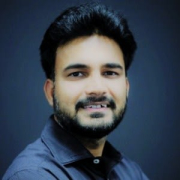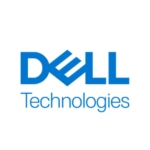What is our primary use case?
We use them for a virtualization environment with VMware ESXi version 7.0, update 3. We have B200 M4 blades in a Cisco chassis connected to Fabric Interconnect switches 6632 with Tracy number 5108.
The Fabric Interconnects are integrated with IBM V7000 storage through a Fabric Extender to connect to the IBM SAN storage, V7000.
We deploy VMs for the banking sector, such as credit union companies. Sometimes, the VMs hosting all the on-premises systems for disaster recovery (DR) purposes are shifted to the Azure cloud. This is a hybrid cloud environment.
What is most valuable?
The most beneficial feature is UCS Manager. It's the best way to manage hardware, creating group policies, like scrub policies and maintenance policies. It is managed through UCS Manager, creating WLAN numbers and MAC address policies. Making a profile and assigning it through Cisco UCS Manager for each blade is an easy task.
In case of any outage, just replace the physical host, attach the profile from Cisco UCS Manager, and it will test the original one. So, UCS Manager is the best thing I'm using in Cisco UCS.
What needs improvement?
From a physical hardware point of view, it's excellent compared to Dell and HP, but from Cisco UCS Manager, it should be more user-friendly.
There are certain things not described in the UCS Manager, like changing or editing profiles. It should be more user-friendly.
In future releases, I would like to see an automated setup process.
For how long have I used the solution?
I've been using Cisco UCS B200 M4 blades for the last ten years.
Buyer's Guide
Cisco UCS B-Series
October 2025
Learn what your peers think about Cisco UCS B-Series. Get advice and tips from experienced pros sharing their opinions. Updated: October 2025.
872,029 professionals have used our research since 2012.
What do I think about the stability of the solution?
It is stable. It is much more stable than other hardware, like Dell and HP.
During the upgrade earlier, it was recommended to upgrade from south to northbound, upgrade Viccars, then blade, then IO, then SaaS, then click interconnects, Site A, and then come to Site B.
Now, we have an opportunity to automate the upgrade activity.
However, during our upgrades, when we did the entire infrastructure for FIA and FIB, during the reboot, FI failed very frequently.
FIA or FIB failed in approximately six to seven situations out of ten upgrades. The replacement of FI took much more time than if we had a business hour for four hours; it took approximately one or two days. Running the entire infrastructure on FIB or a single FI is really risky. That is a main area of improvement for Cisco UCS.
What do I think about the scalability of the solution?
From a scalability point of view, it is good. We did an upgrade for the memory, and it is stable and easy. We added some hosts in a cluster at the desk level. Scalability is fine.
I have been using it for the last ten years. In my current company, there are around 5,000 end users.
But now, the users really want to move out of this solution. It's more difficult from a manageable point of view. We need a specific person with expertise to administer the environment. It totally depends on the cost. The users want to save costs, so they want to move to the cloud, either IBM cloud or Orange cloud. They want to move out; they don't want to expand further.
How are customer service and support?
I contacted support for Cisco HyperFlex. There was some expansion for the desk. Desk expansion in Cisco HyperFlex, so I did upgrade the disk in a three-node HyperFlex cluster. In two hosts, the disk was identified and acknowledged. In one of the hosts, it was not acknowledged.
So Cisco Tech told me I needed to expand the disk simultaneously on each node. I have a three-node cluster, so I need to expand the disk on slot number seven on host one, slot number seven on host two, and slot number seven on host three.
Once all the disks are acknowledged in three nodes, then it will balance the data in the cluster.
Which solution did I use previously and why did I switch?
My company was using the HPE legacy.
How was the initial setup?
The initial setup is easy, but it should be automated through JSON, Python, and more user-friendly.
If someone asks me to deploy ESXi from Cisco UCS, attaching the hardware profile is easy. Still, for overall deployment, it's a bit lengthy. I want it to be automated, similar to the deployment for vXL through a portal, providing configuration in a JSON file and deploying approximately 50 hosts within half an hour.
It will configure the entire configuration through a JSON file.
What's my experience with pricing, setup cost, and licensing?
What other advice do I have?
My recommendation and advice in this matter totally depend upon the requirement and the nature of the business.
For example, in the banking sector, with a heavy data workload on the premises and a need for high availability, I would definitely recommend Cisco for an on-premises environment. I might have the option with Dell, but I would compare Dell and Cisco.
Overall, I would rate the solution an eight out of ten because the hardware is much more robust. But they have not expanded as per the user requirement. Firstly, it should be more user-friendly. Secondly, it should move to automation from the user's manager's point of view. It should be more user-friendly, and deployment should be easily done through automation.
Which deployment model are you using for this solution?
On-premises
Disclosure: My company has a business relationship with this vendor other than being a customer.












